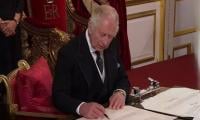The 2020 Summer Olympics will be held in Tokyo where more than 11,000 world-class athletes will participate in 339 events of 33 elite sports. Following Tokyo Olympics, the 2022 Asian Games will be held in Zhejing, China, from September 10 to 25 with contests in 35 major sports events, including cricket.
What are Pakistan’s preparations for these two big events? The purpose of this article is not to point fingers towards the incompetence of the system governing our sports, but to evaluate our sports development methodology with an eye on other countries, including our South Asian neighbours, who are doing exceedingly well in elite sports internationally. Elite sports are high performance sports where emphasis is on winning prestigious competitions through participation of professional sportspersons, trained scientifically by qualified support staff in an enabling environment.
Research on elite sports development reveals that more than 50 percent of the international success in elite sports is due to things that are “controllable” and “developable”. The theoretical model of 09 pillars of sports factors influencing the international success can be seen in the given sketch. This model uses a multi-dimensional approach to evaluate the effectiveness at the level of inputs, throughputs and outputs in a system’s context. The success of any sport system depends upon the non-organised sport and physical education in education institutions and organised sports clubs.
The financial support either given directly by the government or generated through public-private partnerships forms the basis of the input of any sports system. Good governance, structure of national sports policy, participation at international level, talent development and identification, athletic career support, adequate training facilities, coaching programmes and scientific research and innovation are the vital throughputs that result into quantified outcome in the form of success in elite sports.
A sports research project by the name of SPLISS 2.0 unfolds the strategic planning process that underpins the development of successful national elite sport development systems. In this project the researchers identified, compared and contrasted elite sports policies and strategies of 15 nations. Because of lack of interest and research in sports development in our country, I would share salient features of this wonderful project carried out by 53 researchers and 33 policy partners worldwide that involved 3000 high performance athletes, 1300 professional coaches and more than 240 performance directors, so that our policy makers can have an idea about the elite sports development taking place around the world.
The report reveals that all the countries that win more medals in elite sports have a strong national coordination of activities with a clear decision making structure, fulltime management staff in sports associations, autonomy of action for sports bodies with a strong accountability process, longterm policy planning and political backing and recognition at all levels. The countries that generally perform better in elite sports at world and Asian levels have variable outputs among the nine pillars given by SPLISS model. However, the countries that have the best average ratings on the pillars are Australia, Japan, Canada and the Netherlands. One should understand that almost every country that performs well in international sports has a separate elite sports development system, with independent drivers.
But it is a fact that no country can develop its elite sports system without sports activity in education institutions and community-based club sports, where coaches and trainers develop the raw talent. In order to understand the system better, the researchers analysed the Brazilian and Japanese elite sport systems. Looking at the nine pillars utilisation by Brazil, the national government, and the Olympic committee collectively invested around 150 million Euros on yearly basis in elite sports and the funding increased after London Olympics. Yet Brazil is a typical example showing that it takes time to turn investments into tangible success. Money alone cannot guarantee success. The crucial question is how the money is spent.
The main weakness in Brazil, covering all nine pillars, is that there is no clear overall plan and there is lack of sports leadership and coordination. Despite significant funding available, the allocation of funding remains undirected. Japan performs far better than Brazil on all the nine pillars except sports participation (Pillar 3), where both countries perform below average. Japan’s total elite sports budget is 208 million Euros. Japan has a great edge in research and innovation and modern training facilities and is likely to do very well in 2020 Olympics.
Despite the given examples, the policy makers should understand that there are no recognised best practices or set of pillars practised by successful sports nations which could be copied. The reality is that there are a set of broad principles around a common framework that can be adapted to local circumstances in a culturally appropriate manner. The most appropriate role for government is one of enabling rather than delivering. Thus the key challenge for the nations remains to find the right blend of the system ingredients.
If Pakistan has to rise as an Asian sports power in the future, we must have a clear and coherent national sports policy, anchored in a system that identifies the sports development pathways over the next twenty years, supported by adequate funding from public and private sectors. The system must take its birth now and the government must declare sports and physical education compulsory at all education institutions. Only then can we hope to have consistent performers at the international level. And we must have patience and perseverance because there is no short cut to success in international sports.
sdfsports@gmail.com
Newly appointed ILTC President Senator Salim Saifullah Khan. — APP FileLAHORE: The appointment of Senator Salim...
Former New Zealand all-rounder Corey Anderson. — AFP File NEW YORK: Former New Zealand all-rounder Corey Anderson...
Luton Town's English striker Elijah Adebayo vies with Everton's English defender James Tarkowski and Everton's Irish...
Russian tennis star Andrey Rublev. — AFP FileMADRID: Russian seventh seed Andrey Rublev beat American Taylor Fritz...
Manchester City manager Pep Guardiola.— AFP File LONDON: England can win this year's European Championship and put...
Jake Knapp waits to putt on the ninth green during the second round of THE CJ CUP Byron Nelson golf tournament in...







